02:00
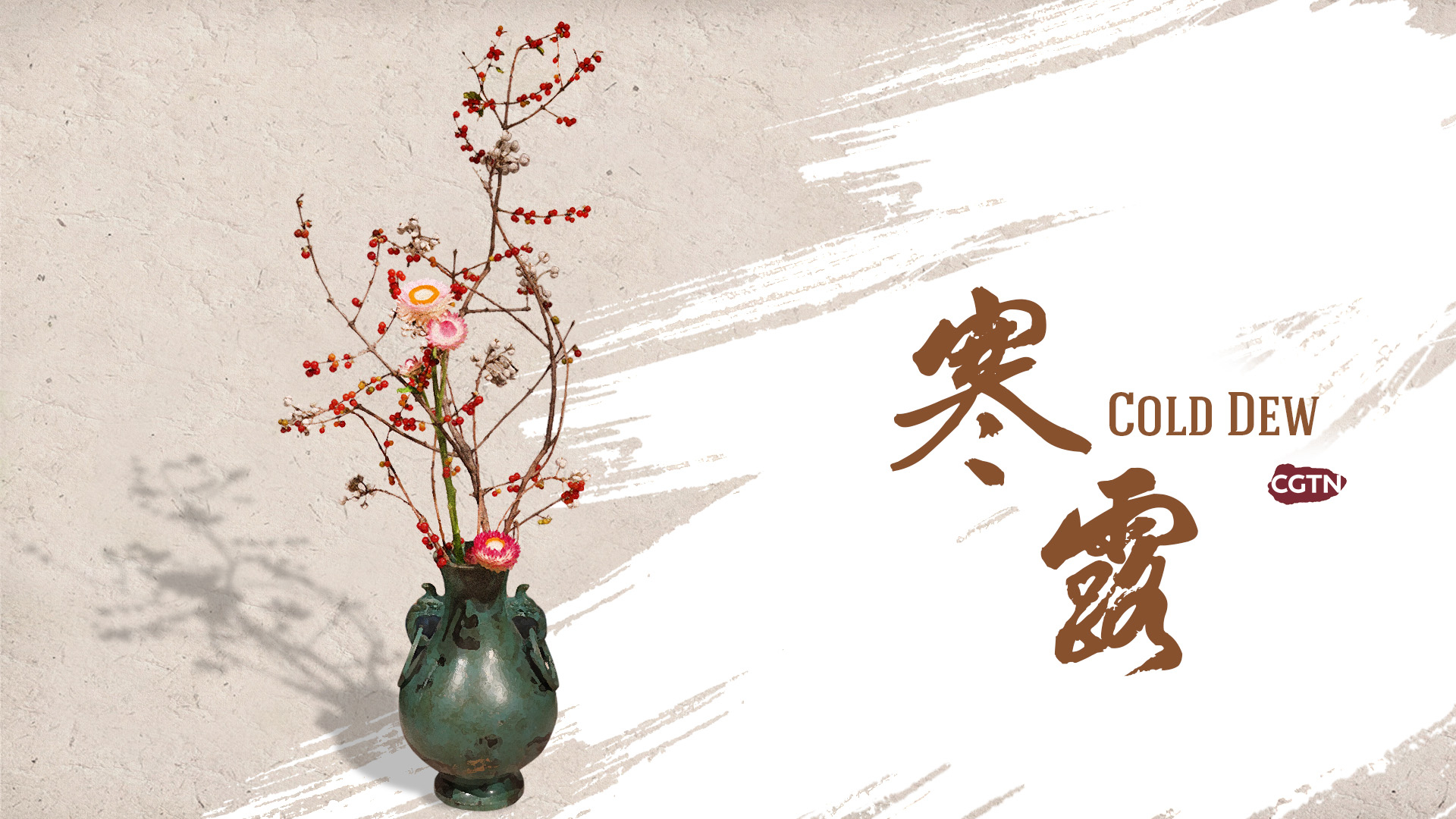
As the temperature continues to drop the golden autumn seems to be coming to an end, indicating the arrival of the Cold Dew period.
The lunar Chinese calendar divides the year into 24 solar terms. Cold Dew is the 17th solar term of the year, which falls on October 8 and ends on October 23 this year.
Cold Dew, known as "Hanlu" in Chinese, signifies the official end of autumn, when the dawn awakens with a wet land, and dewdrops glisten over leaves and flowers. It's much colder than the White Dew.
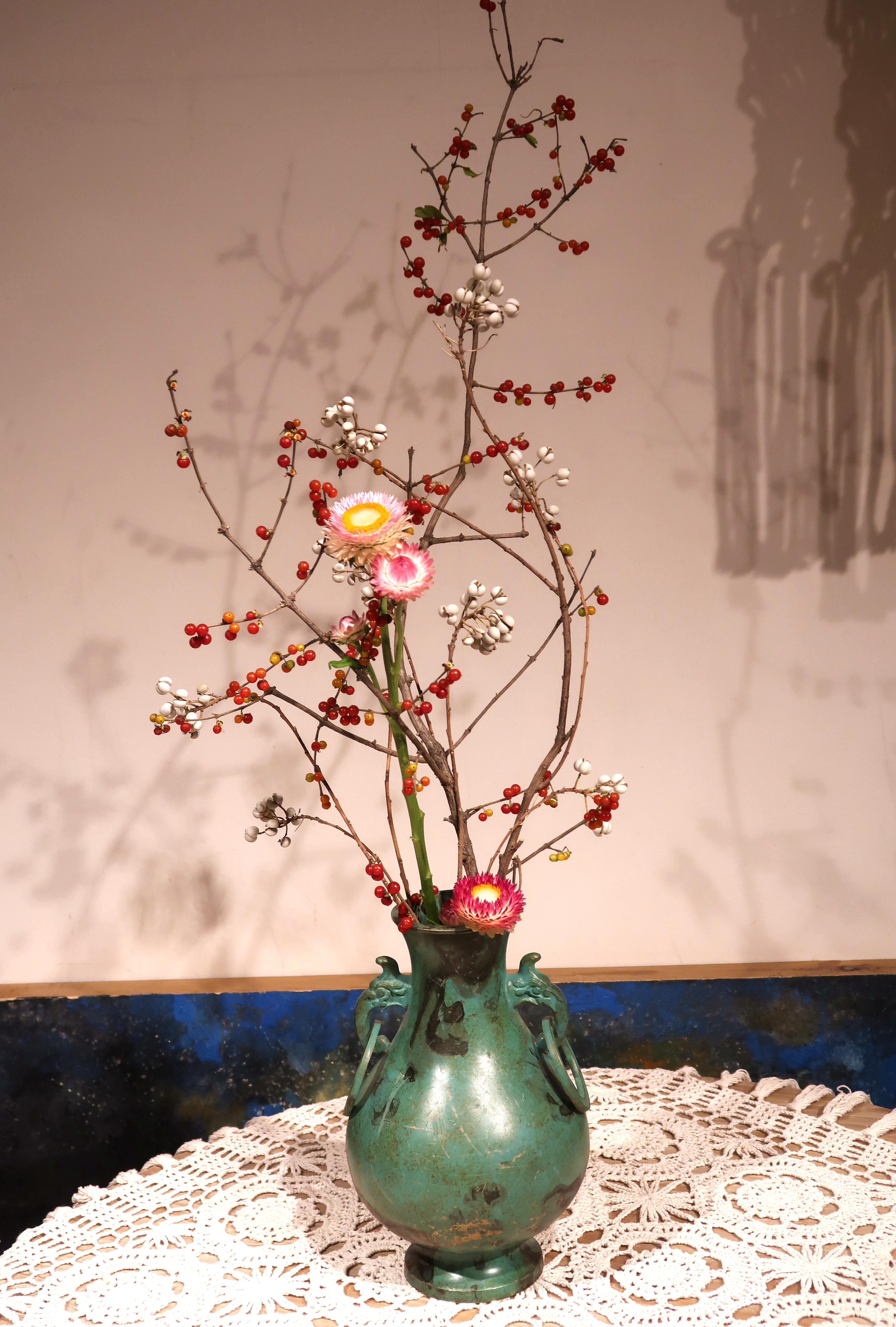
A floral design piece by Cherry Ran. /CGTN Photo
A floral design piece by Cherry Ran. /CGTN Photo
In this edition of our series "Chinese Wisdom of Dividing Time," on 24 solar terms series, flower designer Cherry Ran chose three flowers of different colors: scarlet Lonicera maackii, white Coix seeds and light red strawflowers.
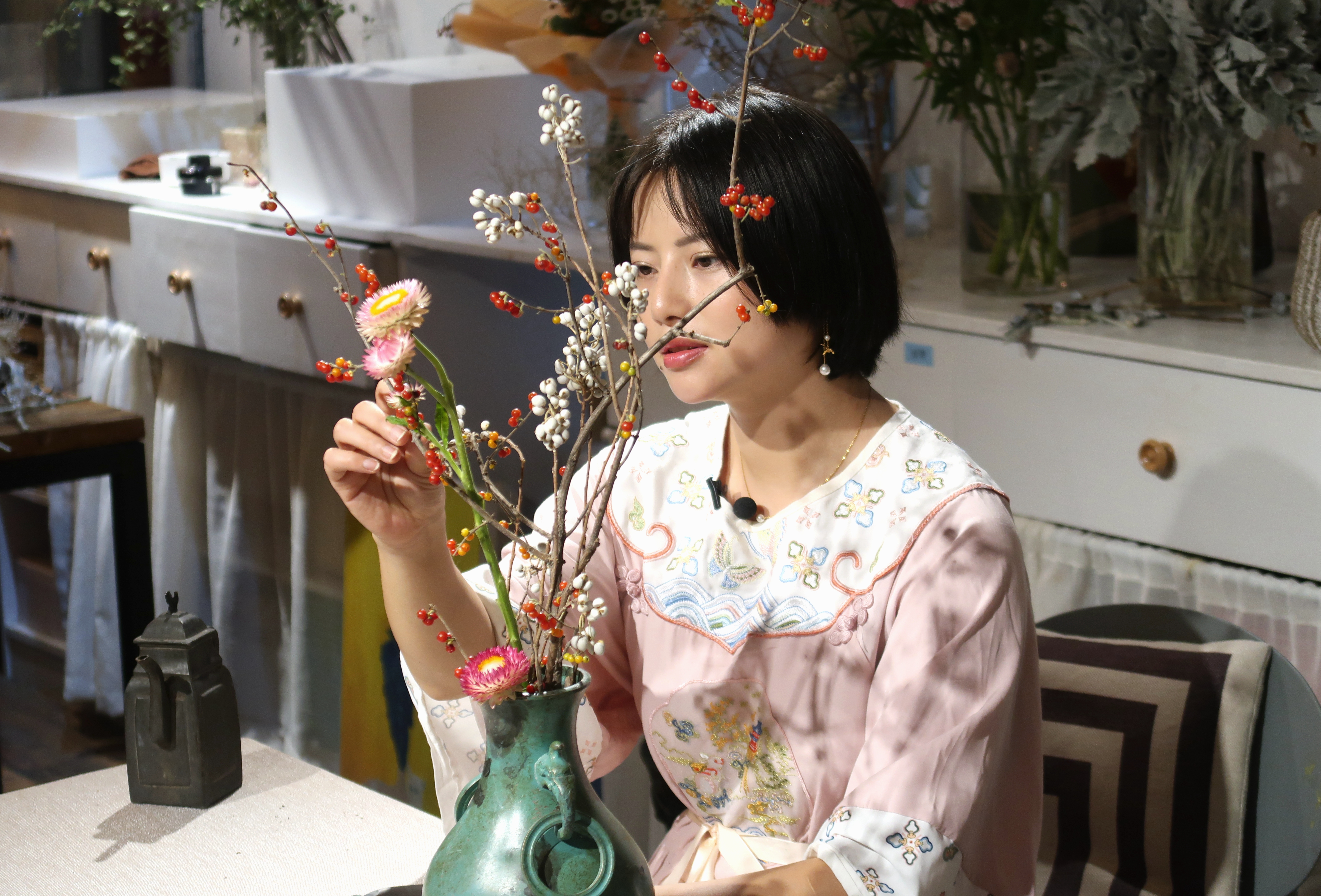
Flower designer Cherry Ran at work. /CGTN Photo
Flower designer Cherry Ran at work. /CGTN Photo
The Lonicera maackii exudes autumn, showing an attempt to make autumn last a bit longer. The fruits of Coix Seed look like water drops, which is quite attractive. The last flower used by Ran is strawflower, which blossoms during the Cold Dew.
The dark green copper ware is chosen to match the tall branches and add an atmosphere of misty rain since some areas of China have abundant rainy days during the Cold Dew.
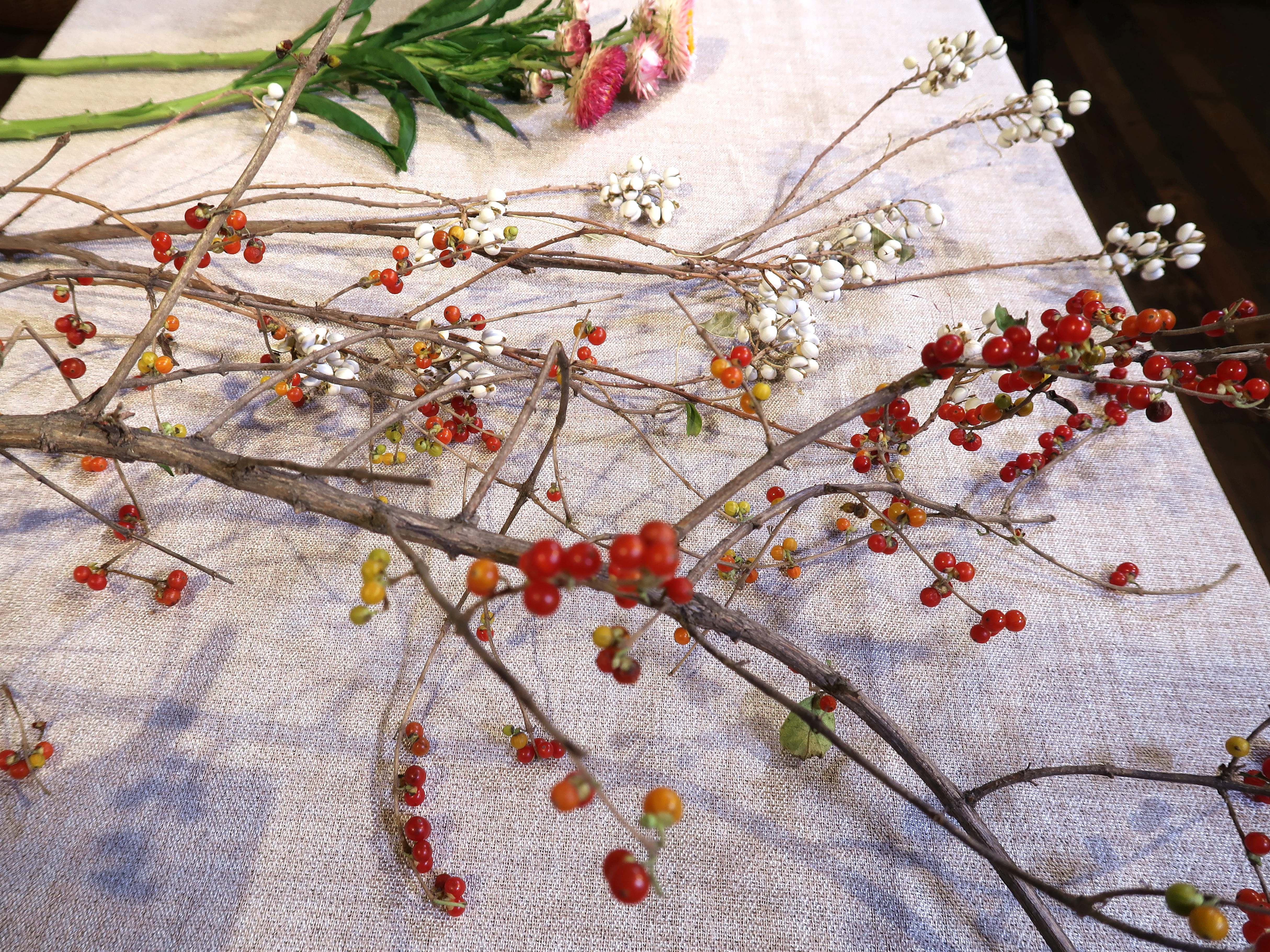
Lonicera maackii, Coix seeds and strawflowers. /CGTN Photo
Lonicera maackii, Coix seeds and strawflowers. /CGTN Photo
As trees and grasses turn yellow, pomegranates, hawthorns, crabs and other delicious foods are served on Chinese people's dinner tables.
During the Cold Dew, temperatures drop significantly and the sun cannot reach the deep waters. Therefore, fish and other aquatic creatures swim in shallow waters where the temperature is relatively high, making the Cold Dew period perfect for fishing.
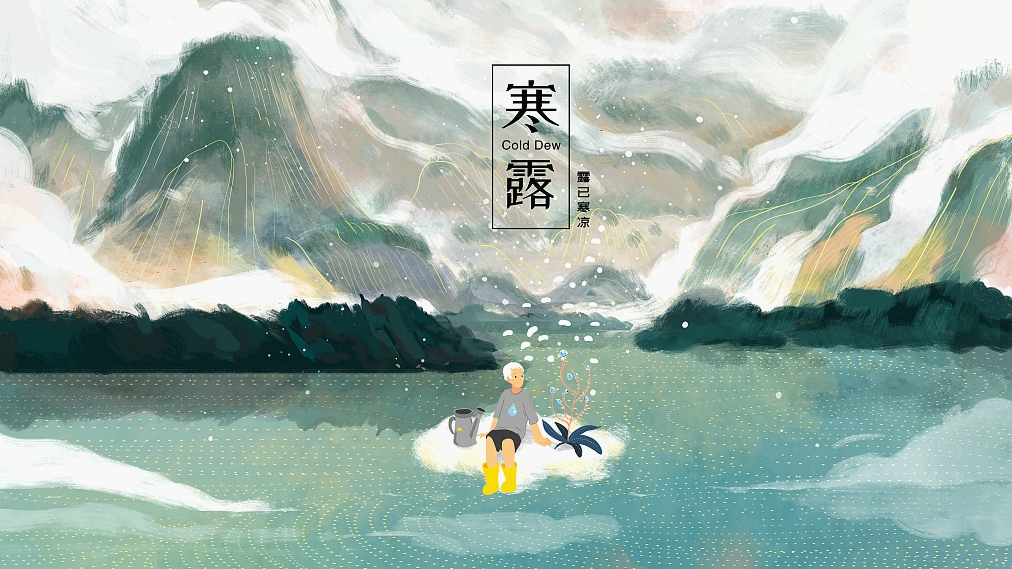
A painting of Cold Dew. /VCG Photo
A painting of Cold Dew. /VCG Photo
This is also a season for blossom. Osmanthus and Chrysanthemum are both iconic flowers of the Cold Dew. They bloom in late October and are full of delightful scent, which inspired Chinese people to use them in cooking.
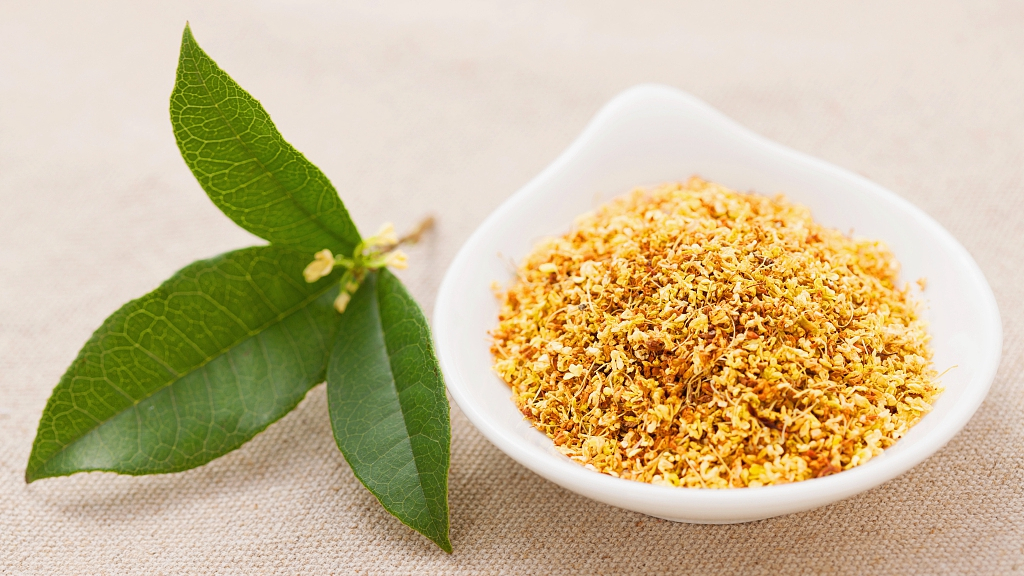
Dry osmanthus flowers. /VCG Photo
Dry osmanthus flowers. /VCG Photo
Dry osmanthus flowers are used to make a popular pastry called osmanthus cake, which has the unique flavor of fragrance. Not just pastries, dry osmanthus flowers are also used to make tea and wines.
The Cold Dew allows us to say goodbye to golden autumn with delicate floral design, and also gives a chance to know more about the culture behind the solar terms.
Editor: Zhang Ziyu
Copy editor: Vanessa Gu
Chief editors: Chen Ran, Lin Dongwei
Video editor: Wu Chutian
Cover image: Yu Peng
Executive producer: Zhang Xiaohe
Producer: Si Nan
Supervisor: Zhang Shilei